This article originally appeared on the A Line Studio Blog.
Welcome to The Culture Sessions, a series of personal interviews with business and creative leaders from across the worlds of retail, fashion, media, technology and design. We’ll be speaking to CEO’s, entrepreneurs, designers, investors, and marketers to get the inside perspective on how business, design, culture and technology are changing the world we live in.
For our first culture session, A LINE is extremely excited to be speaking to David Kahan, CEO Birkenstock Americas. David is a footwear veteran who has held leadership roles at companies such as Nike, Reebok, Rockport and Adidas in a career spanning 35+ years.
David joined Birkenstock back in 2013, since which time the brand has been quietly achieving unprecedented levels of success. Whether launching exciting new retail initiatives like the Birkenstock Box or creating new collaborations with designers such as Rick Owens, Birkenstock has become increasingly relevant to contemporary fashion while remaining fiercely true to its 250 yr old German roots.
Hi David, welcome. Great to have you here today at A LINE. Tell us a little about your background? Where did you grow up, and how this has affected who you are today?
I was born and raised in Brooklyn before anybody would have used the term "hipster" in the same sentence as Brooklyn.
It was a gritty area. Very blue collar. And no matter how far you move from Brooklyn, you'll always be connected.
It's actually pretty incredible how many people in the entertainment & media business grew up in Brooklyn. I think there's just something when you grow up there that just drives you. You're kind of sharp.
Then you move away, and you realize that everyone isn't a little rough around the edges like that. You've got to tone yourself down a little bit sometimes.
How do you think Brooklyn has changed over the last 30 years?
Oh God. I've been gone so long. Like any other place, it’s gentrified. First, the arts people came in, then it became hipster, and now God knows. Apartments probably cost more than entire buildings did when I lived there.
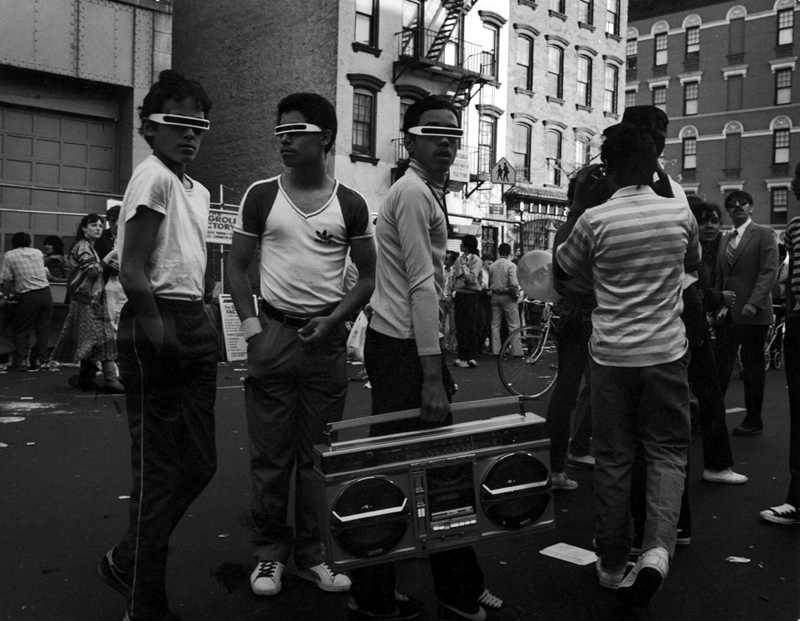
Do you think there were lessons you've learned growing up there that shaped who you are today?
No doubt. I think you got the sense that everybody was just very hard working. There were no lazy people in Brooklyn. It just wasn't that kind of place. People were up early and working late. I think when you grow up in that kind of blue-collar mentality, you keep that with you no matter where you are or what you're doing.
How did you get into the footwear business?
I went to school in upstate New York, and I was working part-time in a Macy's store. I was actually working in the men's department. I was the guy who went around and folded shirts back before they even had those folding squares.
One day the store manager, who went on to be a big executive in Macy's, tapped me on the shoulder and said, "We need help in the shoe department." I must have been 19 or 20 years old. Nobody ever wanted to work in the shoe department because you actually had to work! You couldn't hide and fold a shirt for a half hour. You actually had to wait on people.
So I went and worked in the shoe area, and from that, I ended up meeting some of the executives from New York who used to come visit the store. From that, I then got into the buyers training program.
A few years later they then asked me to start the athletic department. This was back before there really were athletic footwear stores. It was when Foot Lockers were first opening in malls. No store had an athletic department.
I think I was just in the right place at the right time. It was probably because I was the only guy who had an athletic and sports background, and this was something they found interesting. I had absolutely no idea what I was doing. I was 24 years old and totally wet behind the ears!
We created the first real shop in shop, sort of based on Foot Locker, and we created this thing called the “Macy's Athletic Club”. We actually did T-shirts and sweatshirts. I think I paid a friend $50 to design them. We sold thousands of them!
Then we had the happenstance of happenstances. We used to do a small event once a month on a Thursday night when the store closed. It would be a health and wellness seminar, or how to start training for the marathon or aerobics classes. We would probably get 20 oddball people off the street that came, and we'd give them a coupon to shop.
And then New York Magazine ran an article on the Top 10 hottest pickup spots in New York City. It was Studio 54, The Cat Club, the Fountain at Central Park on a Saturday afternoon, and Macy's Athletic Club Thursday night athletic seminars. We knew nothing about it!
I'll never forget one of our people in the building coming in and saying, Did you guys know Macy’s Athletic Club made New York Magazine Top 10 pick up spots in New York City? We were like "wait - we didn't beat out Studio 54?!"
We went from having 20 people to probably 250. Seriously, that kind of put this thing on the map. It became a phenomenon.
How did you capitalize on that?
We were dealing with athletic companies who were a lot smarter than I was, so they kind of knew what to do with it. The Nike's of the world started to say, "Hey, how about we sponsor it? We'll send in an aerobics instructor", or "we'll send in one of our athletes."
So professional athletes would come by when they were going to be in New York City. When it was the US Open tennis, they would pick Stefan Edberg who was a pretty good looking guy. He would come, and there would be a lot of women there, and it just became this pretty big thing.
What were the big footwear brands at that time?
Same as they are now: Nike, Adidas, New Balance, Converse. Not a lot has changed. When you look at this industry, I'd probably say the top 20 styles on the market right now are probably styles that still existed back then. Except back then they weren't classics, back then they were new.
We were the only people in the country getting new shoes that no department store had. It became a pretty big thing - one of the most visible in the industry. The industry was in its infancy, and I was literally 25 years old, and I swear to God I barely knew what I was doing.
It must have been lots of fun though!?
It was a blast. I had access to layers of management at companies that I shouldn’t have had. Some of the people I grew up with in the industry were people that we all knew when we were young, whether it's Mark Parker at Nike, or Mark King at Adidas. We all kind of grew up together with the people that were running the companies back then.
And these were companies that at that time didn't exist like they do now. Nobody formed Nike to make a fortune and to create an empire. They were a bunch of outcast running guys. At the time, it was just a lot of guys that were into sports. Companies weren't really thinking about going public at that point. It wasn't really a Wall Street kind of thing.
When you think back to those days, you had neighborhood sporting good stores that had a few sneakers in the back corner. There wasn't a whole sneaker culture. We kind of started that whole thing.
 Birkenstock's mobile pop-up space, Birkenstock Box, will be outside the Rick Owens store on La Brea Avenue in Los Angeles in March 2018
Birkenstock's mobile pop-up space, Birkenstock Box, will be outside the Rick Owens store on La Brea Avenue in Los Angeles in March 2018
What was the moment where you noticed a sneaker culture starting to develop?
I think the big moment was when you started to go from people just wearing sneakers to this cultural revolution across sports fitness, health, wellness etc.
This was the start of when brands started to find a professional athlete, put them in a shoe, and it became THE big shoe. There were people doing that across tennis and soccer for a while, but nothing to the magnitude of Nike and Michael Jordan.
You had athletes that had sponsored shoes, but they were just athletes. When athletes became cultural icons like a Michael Jordan or Tiger Woods, that's when it exploded. That then led to the next thing, which was to find and sign a rapper. Or find and sign an actress.
I was at Reebok through the whole Jay Z and 50 Cent thing. Back then we were like, "Who the hell would wear a shoe that some Rapper is wearing?" Then when Jay Z became Jay Z, it became “put him on a billboard in Times Square wearing a pair of Timberlands”, and all of a sudden that became THE uniform.
That was where people started to realize that the cultural thing was important. If you could get cultural influencers to wear your product, then it was worth shifting across from athletes.
How quickly did the shift towards "cultural influencers" start to progress, and what do you think were key drivers?
It wasn't until the emergence of hip-hop, and urban culture, and bands like Run-D.M.C that things started to really change. I'm good friends with a gentleman named Angelo Anastasio, who back in the early 1980’s found Run-D.M.C when they were basically playing high school dances in the Bronx. He picked these guys and said, "I'm going to get them in Adidas."
They did the track “My Adidas”, and during their concerts, everybody in the audience used to take off their shoes and hold them up in the air. They became very identifiable symbols of who you were, and what you were all about.
If you look at buying patterns through the years for the luxury market, there have always people that appreciated Chanel, Hermes, Yves St Laurent, and these were the same people who could buy a Mercedes-Benz, or a B.M.W. or a Porsche.
And you had these people who - and not to look down on them in any way - but Adidas was THEIR B.M.W. It was THEIR Mercedes. They were never going to own a Learjet. They were never going to have that “Fuck you I have a Range Rover” thing but they could have something that represented them and their tribe.
And you were dealing with iconic logo’s that you could see from a hundred feet away. You could see that swoosh. You could see those Three stripes. You could tell what it was.
So the formula became “sign an athlete or rapper, put him in a product, somehow get that product out there”. This was before social media. You had MTV and that was basically it. And this stuff sold out quickly, which led to the whole idea of product scarcity. We learned that the scarcer you made something, the more people wanted it.
And again, it's people that were never going to collect that rare bottle of wine, or run a B.M.W., or walk around with an Hermes Birkin bag. To them sneakers were the thing you had to have. If you were in New York, Los Angeles, Detroit, or Chicago, that was the uniform. It was a pair of athletic sneakers and a team jacket. And the bigger the logo the better.
But you're not going to see a guy walking down the street anymore with a giant swoosh on his shirt. That was before brands like Nike purposely and strategically toned things down once it started to get out of control.
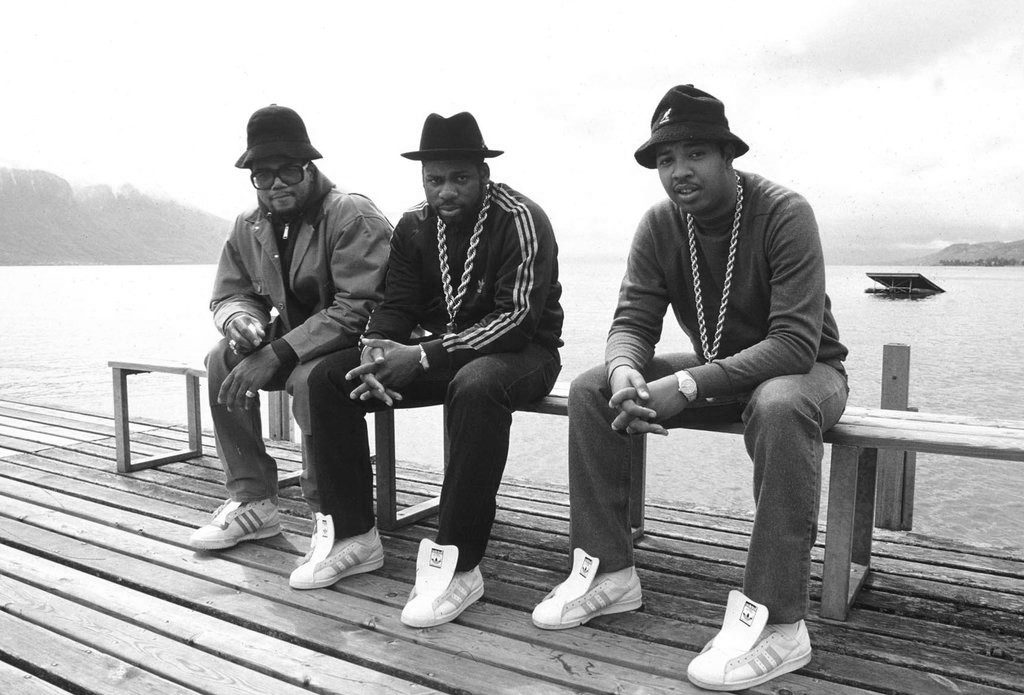
I guess once they started controlling how their brands were perceived, this was the beginning of traditional brand management for these companies.
How have you seen these approaches to manipulating and controlling brands shift and evolve?
I think there are two different universes now.
Firstly, there are the people who are highly influenced by social influencers. You can literally pay a Kardashian sister $250,000 per Instagram post right now. If you want them to hold a Vitamin Water, it’s $250,000.
There are people who respond to that, and they're probably the same people who watch the Housewives of L.A. and the Kardashians. But what's happening now is that because social media is so prevalent, and the younger generation are much savvier about it, they know that person is being paid, so they know that person is a shill.
And secondly, there are brands like Birkenstock that are doing the reverse of that. We really believe in an organic, more real approach that’s grounded in who we really are.
I wouldn't pay somebody a dime to wear our product, and we get people reaching out all the time. I had Warner Records and Live Nation on the phone this morning, and even if I could get free tickets to concerts I’m just not going to compromise the brand.
I also think people have realized that a lot of these celebrities selling these products aren't necessarily who we thought they were. At the height of their celebrity people like Michael Jordan and Tiger Woods were protected from the public knowing who they really were. So when you found out who these stars were behind the scenes, did you really want your kid growing up and emulating them just because they could hit a golf ball 300 yards, or shoot a jump shot?
Social media has created a transparency which (I think..) has forced a shift towards marketing that needs to be more rooted in "authenticity”. Do you agree, and is this true for you?
I say it all the time. I think that's the only way you can be. We're living in this weird time now where you hear the term “fake news”. And the truth is a lot of things that you think are real probably have some falseness to them, and a lot of the things you think are false might have truth to them.
So you don't know what's real and you don't know what's false, and people are confused and suspicious. So if you have a brand that is truly REAL you can never compromise the authenticity. If you do you're compromising your end user. You're compromising your relationship with those customers.
How does Birkenstock keep that authenticity?
One of the key things we really DON’T do is product placement. And we don't do any celebrity seeding. It’s a big one for us.
I like the fact that when somebody sees Jessica Alba out with her kids, or Julianne Moore, or Leonardo DiCaprio going out for a cup of coffee in West Hollywood, odds are they paid retail for those Birkenstocks. We pride ourselves on that.
We don't send shoes to people. We don't do the Oscars gifting room. These people are making more than enough money to spend $130 on a pair of well made shoes.
And I think product placement has come back to bite a lot of companies right now. That feeling that everything is just seeded, and everything is almost too pre-planned. We believe that absolutely compromises our brand.
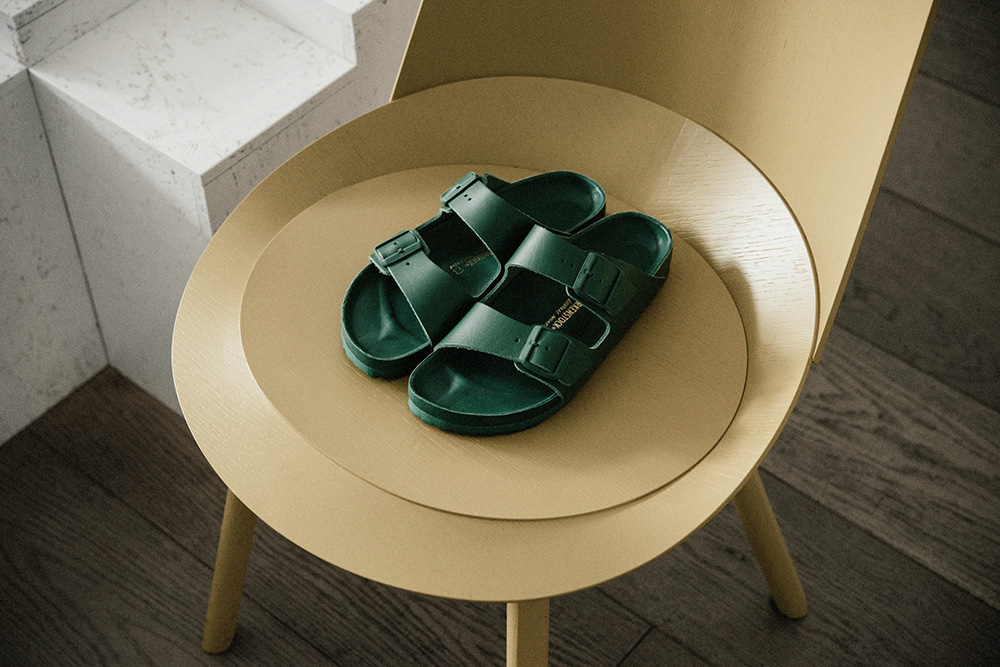
Building on some of the things you just mentioned, what do you think makes a great brand? Conversely, what makes a not so great brand?
Great brands have an emotional connection between themselves and their consumer. Let’s face it, there are millions of brands, and 99.9% are brands that you LIKE. You don't hate them, you just like them.
“What kind of toothpaste do you use?" "I don't know, Crest, Colgate, Aquafresh”
“How do you choose that?" "I don't know, I go to the drugstore and it's at eye level."
I don't think there's many people that say “I love Aquafresh!”
Yet there are brands that people love. People love Birkenstock. They write us love letters. There are sororities that do their homecoming float in a giant Birkenstock shoe. There are schools that send us copies of the Cinderella play where instead of the glass slipper it's a Birkenstock. These are passionate brand missionaries.
There are more Olympic athletes that have a Nike swoosh tattooed on their body than the Olympic rings. There are people that stand outside waiting for the new Apple phone when, let's face it, a Samsung phone can do exactly the same thing. And that's because people have an emotional connection to these brands.
And these are brands that NEVER deviate from what they stand for. And they stand for something bigger than the features and benefits of the product.
If Nike was only about “maybe you can run a little faster”, that's one thing. But they're not. And Apple isn't just about technology. It's about thinking differently, being creative. It's about changing the freakin' world. By using that product you're changing the world. And it's the same thing with Birkenstock.
Do you do partnerships, or do you turn down everyone looking to work with the Birkenstock brand?
We take every call. A day doesn't go by that I don't get reached out to by somebody that wants to do a collaboration, whether it's a designer like Marc Jacobs, or Karl Lagerfeld. People love the brand.
To answer the question we do a few small celebrity "friends & family" things for people who are genuinely long-term fans of the brand.
For example I was in New York two weeks ago with the Olsen Sisters. They've been wearing Birkenstocks since before this thing became what it is now. They're authentic. They're real.
If they wanna pick a style that hasn't been in the line in a while, maybe we'll figure out how to do something with them. But nothing more than that. We would never sponsor anything.
I imagine the brand visibility is happening organically anyway because a lot of people are wearing Birkenstocks, so why fake it?
Exactly. But people reach out who still live in this "rear view mirror mentality" of how you connect the dots. That's what a lot of marketing people are doing right now. They're looking to make connections. For example “I own the estate for Jerry Garcia's artwork. Why don't we do a Jerry Garcia print on a Birkenstock?
Well, it sort of sounds natural and makes sense, but then you say to yourself “What does it really do, and is it something I'd look back on two years from now and say was the right decision?”
Is that decisions mainly intuitive or does it involve data?
Totally intuitive. There is one collaboration that I'm working on right now that my intuition tells me would be mind-blowing. Now I've got a couple of people that are way hipper than me going, "Yeah, I think you're a year behind on this," and I'm like, "Really? Don't you think this would be great?" But I'm trying to get input from people on these things. Maybe I'll ask you guys afterwards when the tape's off because some of this stuff isn't public!
One of them we're really close with right now, but the problem is it takes a year to bring it to market. You think it's right NOW, but you’re having to think a year in advance by the time the product gets made. I’m a little afraid that a year from now it might be like “Oh. Why did he do that? What a bonehead!”
I've got a bunch of guys that try to do everything off data, but I don’t think you can. This is a totally non-data driven decision, and most of the big ideas, whether it's footwear or apparel, have all come from instinct.
How important do you think shared values are across these collaborations?
Yeah. It has to be shared values. That's the biggest thing.
So for example, the ultimate collaboration for us would be Hermes, or Maison Goyard. Brands that never really do them, but that we feel share our values.
Two years ago we created an orange based around the Hermes orange. We took a year to get the color right, and we almost did. I don't wanna call it “fake”, but in the end Hermes wouldn't do it as a partnership so we had the orange put on one of our shoes. We did it with one of the leading trend guys in the world, and he put it on Instagram and the thing sold out in three minutes. Three minutes! It was like an Air Jordan type situation, or one of these Adidas Yeezy things. Nobody has ever done this in our space before and it created this incredible stir. But it would be really cool to do it in conjunction with the brand as they share the same values.
We're very specific because we hardly ever do them, but if we do it’s something really special. For example we’re playing around with this really cool tattoo artist doing tattoos on the shoes to make them one-of-a-kind. Maybe he does 36 of them and there are only 36 in the whole world.
Another might be taking some iconic artist. I did a Basquiat art collection with Reebok back in the day. That was kind of crazy and it took things underground for them.
We're playing around with the idea of taking people like that and doing real limited editions. You would come out with it and sell it on social media directly, and the stuff would just evaporate.
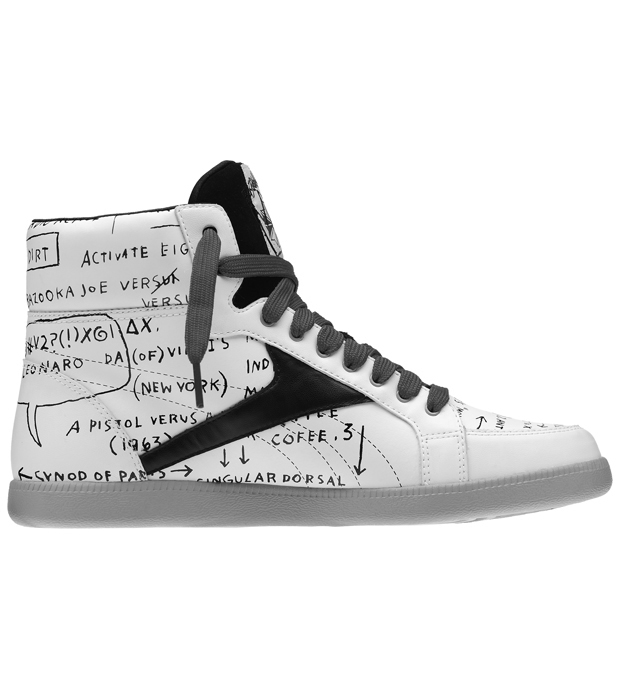
How do you manage to balance the "exclusive, high fashion but low availability" concept with the large-volume distribution needed to make a mainstream brand profitable?
That balance is the whole game, because if you don't play that game you become a small niche player. And that's okay, but I've got employees and overheads that I need to pay.
So we need to be a larger brand, and to do that successfully you need products that the average person in Kenosha, Wisconsin can go buy. And then you also need the stuff that’s more exclusive.
The brands like Nike who have done this really well have the “cool collector” products, and then something a guy living in suburban Ohio can pick up at the local strip mall. You need that balance, and you have to do it really well or you become too pedestrian and transactional.
And the product has to be really, really good. The taste level has to be something that you go “God that's great”, but it also has to be reminiscent of a product that the average person can get otherwise it feels too aspirational and unattainable.
I'm going on five years at Birkenstock and this has been the ultimate exercise in the whole idea of spreading the gospel of something. Five years ago the only people who wore Birkenstock were people who ONLY wore Birkenstock.
I remember one of the first things I did after taking the job was to launch a trade campaign. We had a picture of a woman's closet filled with stylish clothes. We had Christian Louboutins, and Jimmy Choos, and a pair of Nike Airs, and then we put Birkenstocks on the shelf. The copy said "Same shoe, different closet." Everybody understood what we were saying. "Oh, the shoe that used to be kind of with those weird guys, now it's part of a fashionable woman's wardrobe."

What does Birkenstock stand for as a brand?
The answer is that the brand is all about health, wellness, sustainability, authenticity and heritage. Those are the words that come to mind when you think about our product.
And more than anything, comfort. We NEVER compromise comfort.
How do you maintain these brand heritage values as you transition into that wardrobe of luxury brands?
I think of it like this. Back at grade school, there was always the cool kids' table. It was the cheerleaders and the quarterback on the football team. And way over in the corner there was the "geeky kids" table, and they just wanted one of the cool kids to be friendly to them and say hello.
So the geeky kids were the Birkenstock kids. They were the theater and art kids, sort of outcasts, and they were into their own thing.
Anyway, once the "cool kids" started wearing Birkenstocks, as a brand we decided to stay at that "geeky kids" table. Instead of forgetting about those geeky kids and saying, "We're now gonna go hang at the cool kids' table," we said, "Oh, hey you cool kids...Now you just figured out what we've known all along. Come and join us!"
Who else do you think does a good job of getting this balance of values right?
I always go back to Nike as that's where I worked in my formative years in branding. Nike garments used to have a hang tag that said, "Engineered to the exact specifications of world class athletes."
So you put on a pair of their shorts, and even if you're going out to BBQ, it’s "Engineered to the exact specifications of world class athletes." You're feeling pretty good at that point. You're the LeBron James of grilling.
And any time they veered too much on the side of lifestyle they lost their way. So what do they do? They go back to their true, core values.
You look at them right now and they've lost a little bit of momentum, so they go back to the roots and values of the company and say, "We make things engineered to the exact specifications of world class athletes”. And then they come out with products like the VaporMax shoe that are mind blowing.
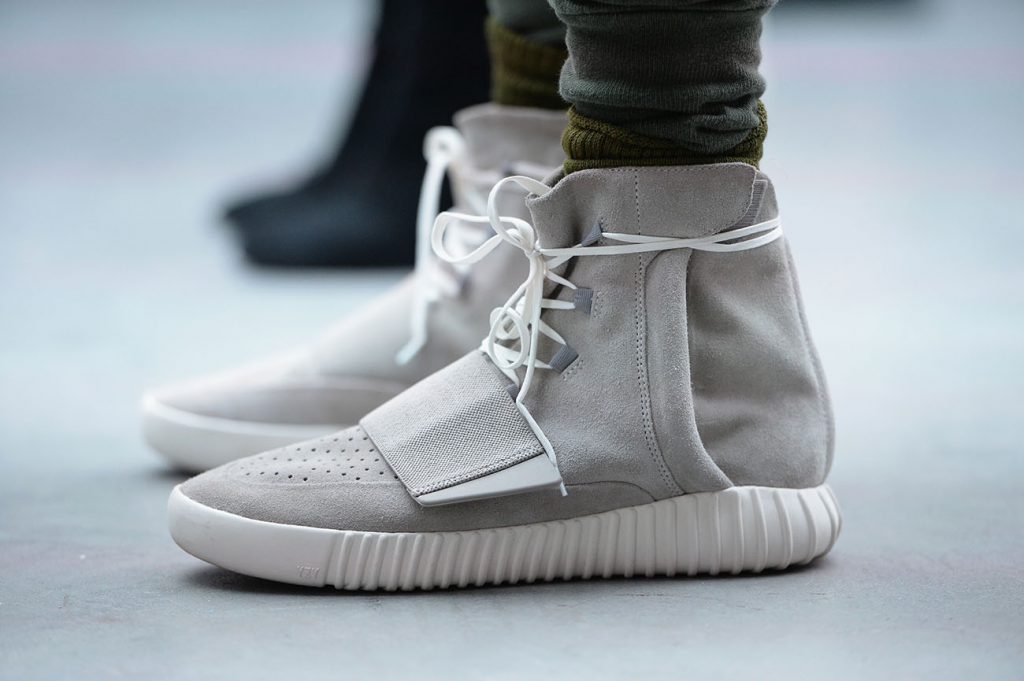
Looking at Adidas’s more recent brand focus on contemporary culture, and comparing with Nike’s continued focus on their athletic roots, how do you think this plays out?
I think for Adidas this whole Yeezy thing was the right thing at the right time. This guy just basically made it happen. And I think their product got better. I also think they have a number of iconic shoes like the Stan Smith that have been so cleansed in the market that they are almost new and fresh.
But I think if you are an athletic brand, you have to make sure that in your heart and soul you're making products for athletes. And once you live and die by the non-athlete, you're just living and dying by fickle. Sure you can get a good run. It can last a few years. But I think if I was Adidas right now, I would be making sure that I've got some technological innovation that's going to focus on the athletic side, because sooner or later those iconic styles start to kind of play themselves out.
Read Part 2 on how the retail landscape is changing, and the secrets of effective leadership.
A Line is a global branding and design studio based in San Francisco.

